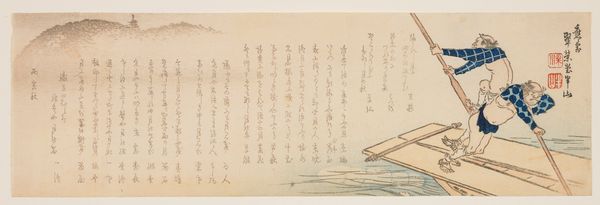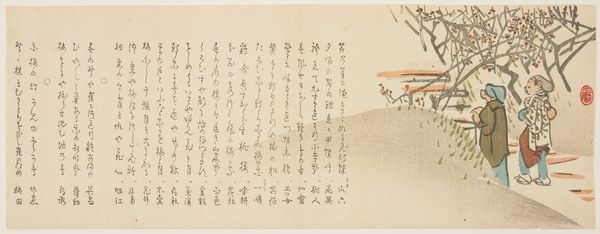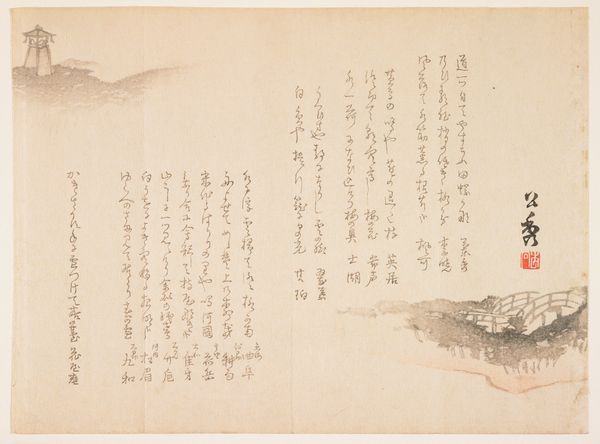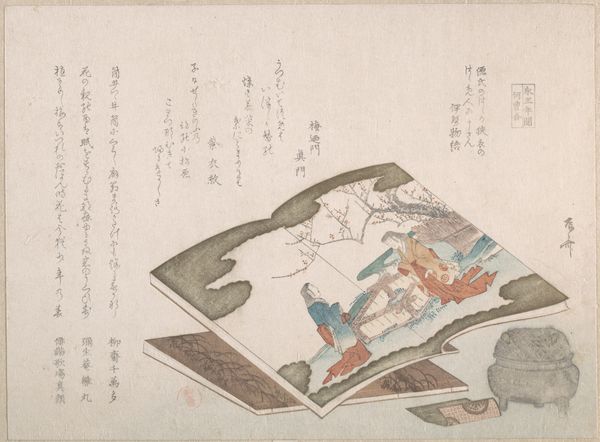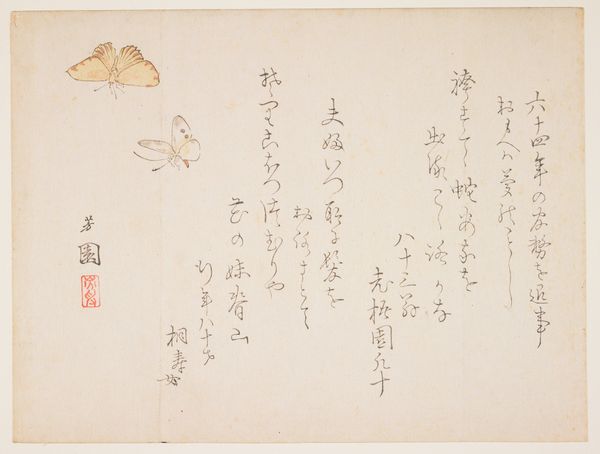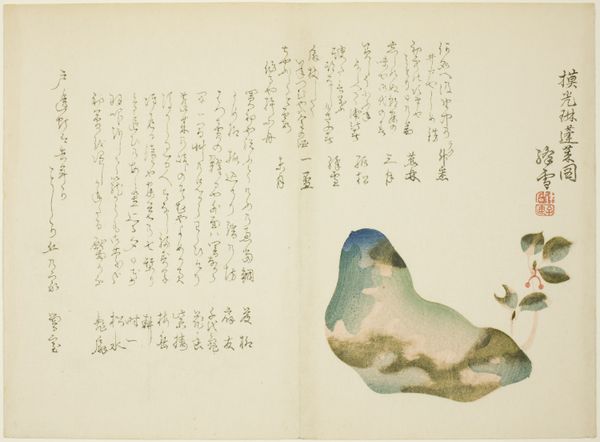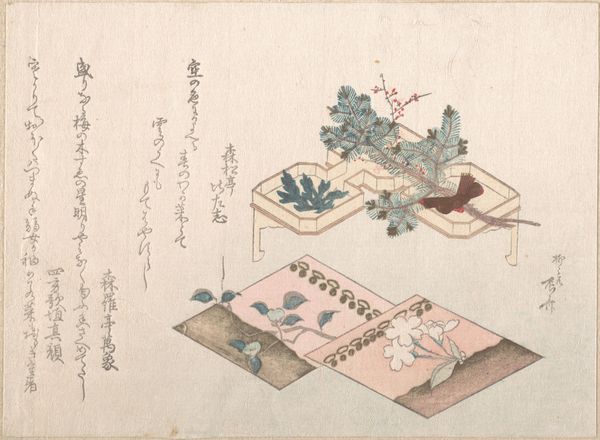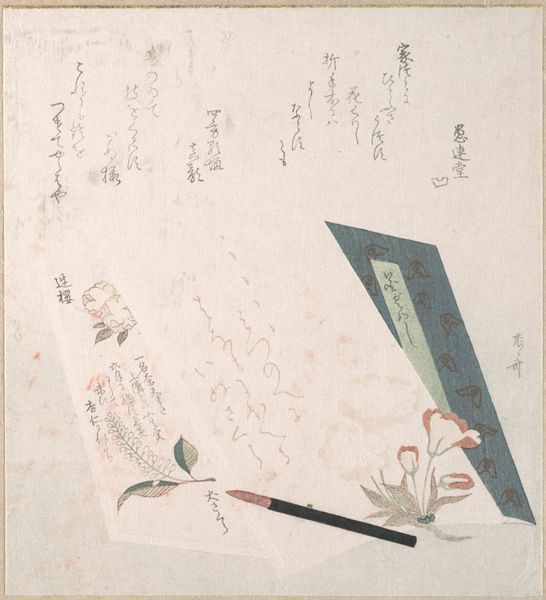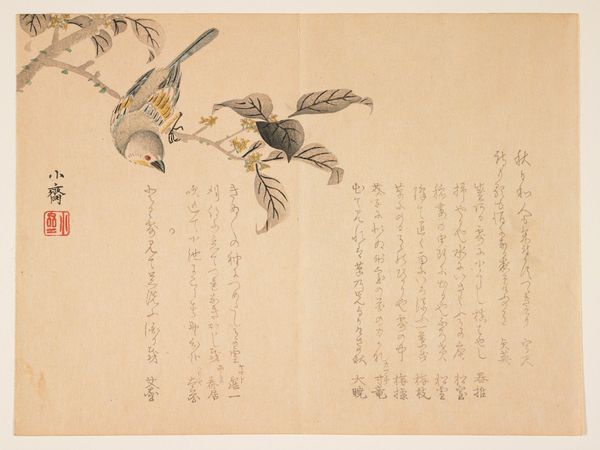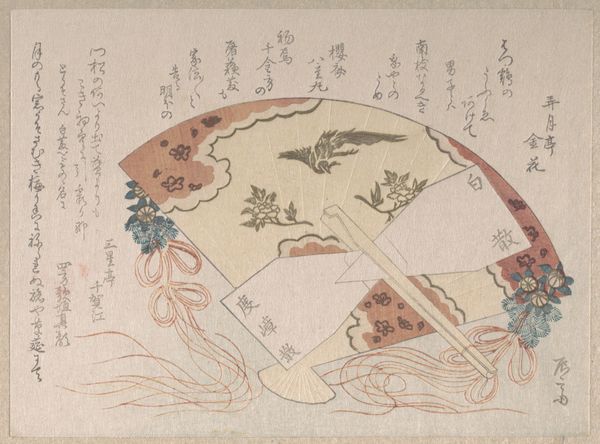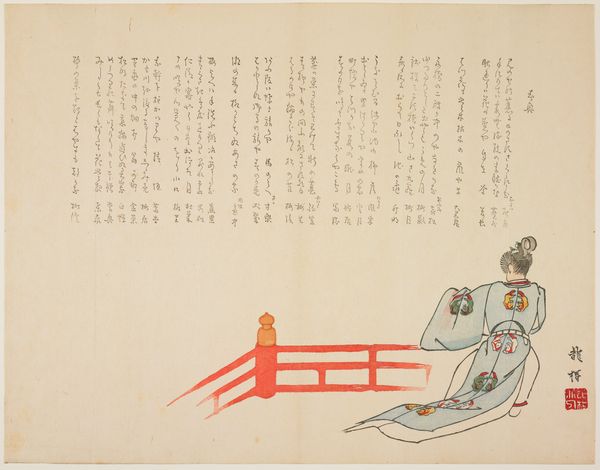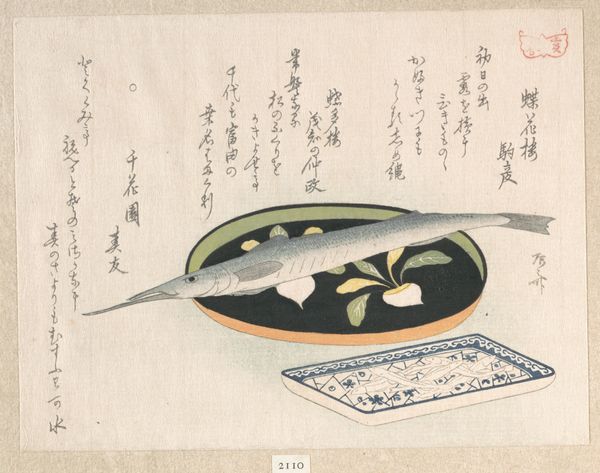
print, watercolor
#
water colours
# print
#
asian-art
#
landscape
#
ukiyo-e
#
figuration
#
watercolor
Dimensions: 25.5 × 18.6 cm
Copyright: Public Domain
Curator: Welcome! Here we have Shikō Munakata’s "Rabbit and Fish," believed to have been created around 1855. It’s a delightful example of Ukiyo-e printmaking. What’s your first take? Editor: It's remarkably sparse. The composition uses these floating planes, an almost surreal arrangement, which gives it a rather unsettling quality, almost like a dream. Curator: Dreams can be powerful mirrors to society's undercurrents. Remember that this work was made during a time of significant social and political upheaval in Japan, as it faced increasing pressure from the West to open its borders. We might interpret the unusual juxtaposition of the rabbit and fish – land and water – as emblematic of the disruptive forces challenging traditional boundaries. Editor: But the line quality! Look how fluid and expressive it is, particularly around the text in the upper left, it's incredibly well balanced. Curator: Balance, yes, but perhaps also tension. Ukiyo-e often reflects the tensions between the elite and the common folk, a push and pull mirrored, perhaps, in the rabbit and fish as symbols – one of innocence, the other of sustenance, maybe? Editor: Semiotically speaking, the fishing hook, that stark representation of capture, disrupts any idyllic reading. Is it a symbol of imposed control? Of outside influence intruding upon this domestic space? Curator: Precisely! This interplay hints at the disruptions caused by modernization. Think of it alongside the socio-political landscape where established hierarchies are being questioned, creating an environment ripe for symbolic interpretation. Even something as apparently mundane as fish being caught reflects very deep systemic tensions. Editor: It also reflects the mastery of line, and the effective use of color. That blue, set against the warmer tones, focuses the eye to that plane in space. And those are all formal devices. Curator: Form isn’t devoid of context. In fact, it’s intertwined with it. By understanding this print’s place in that critical historical moment, its artistic components offer richer narratives concerning cultural anxiety and evolving identity. Editor: I admit the context is useful, but I am walking away focused on the precision and daring nature of that compositional format. Curator: And I am reminded of how art acts as a visual echo of cultural discourse, revealing how we negotiate shifting world paradigms.
Comments
No comments
Be the first to comment and join the conversation on the ultimate creative platform.
